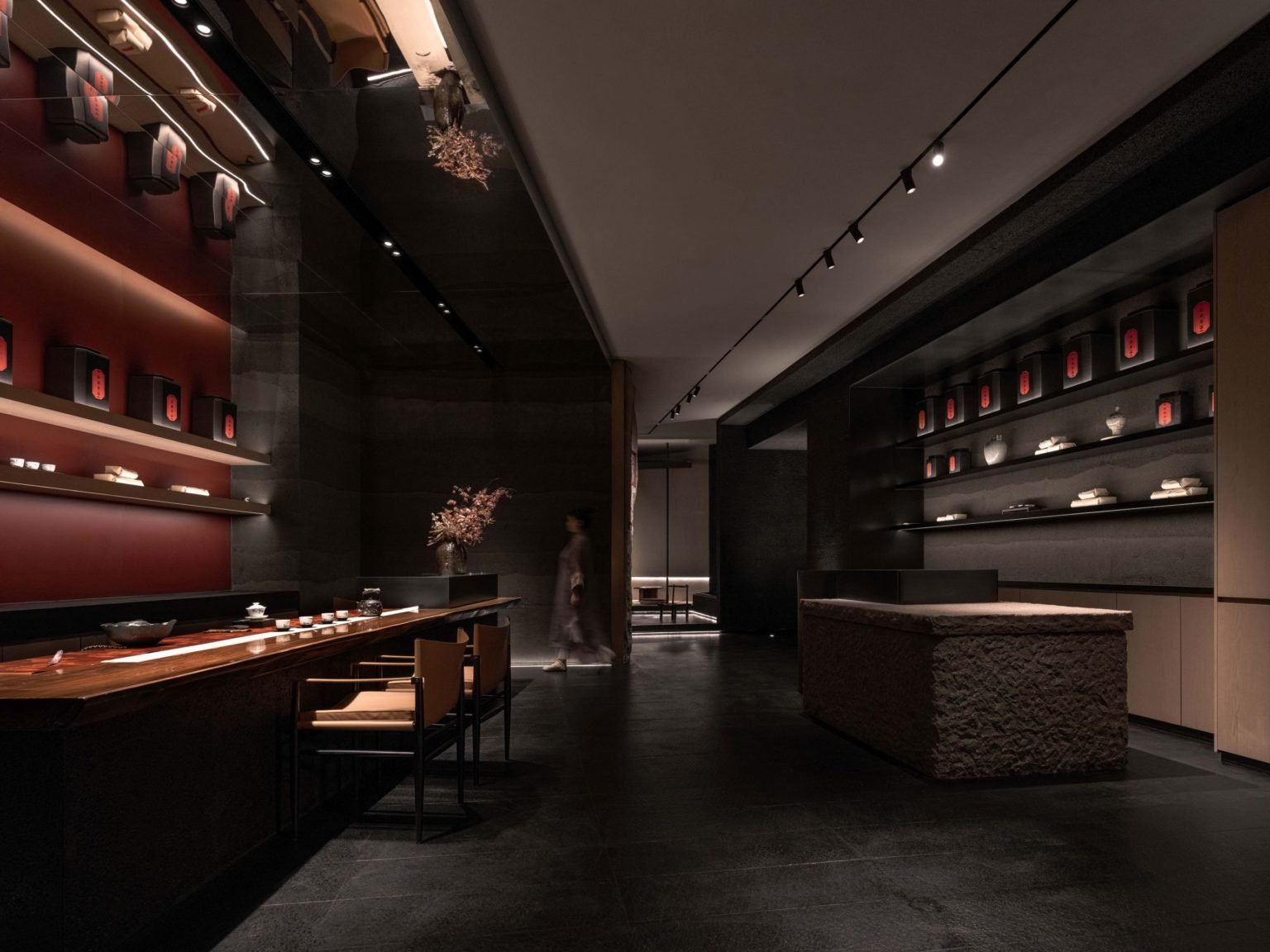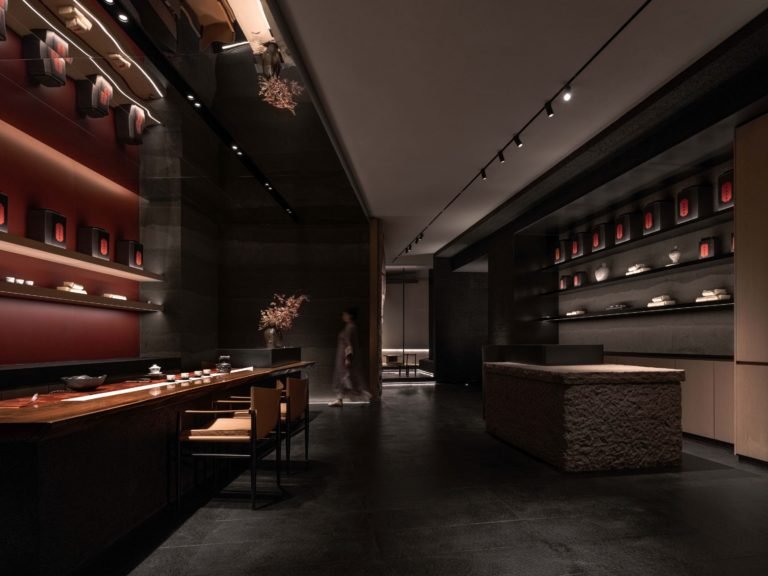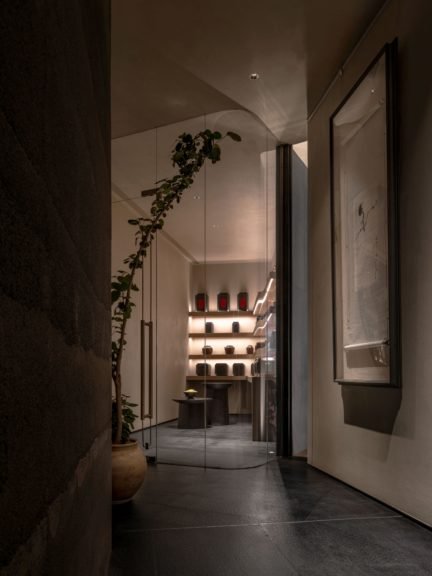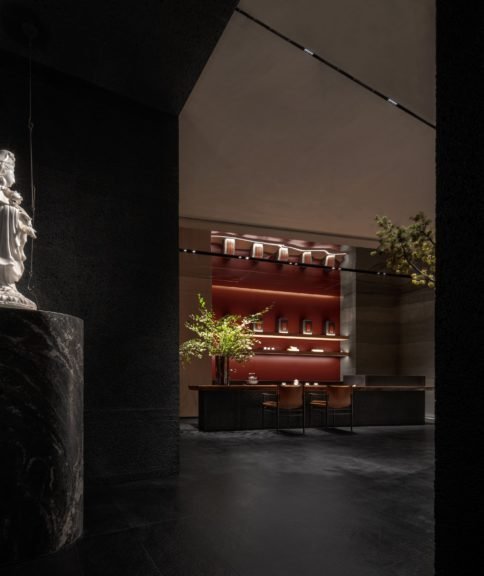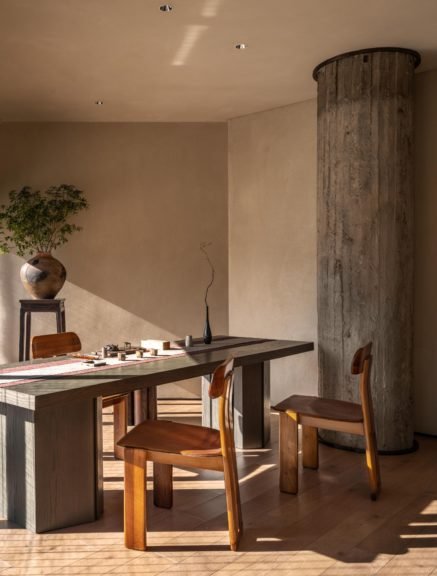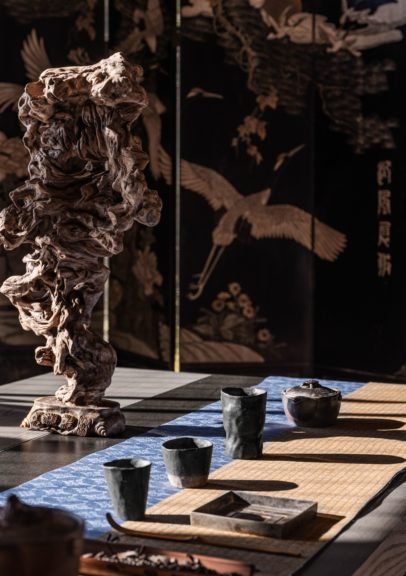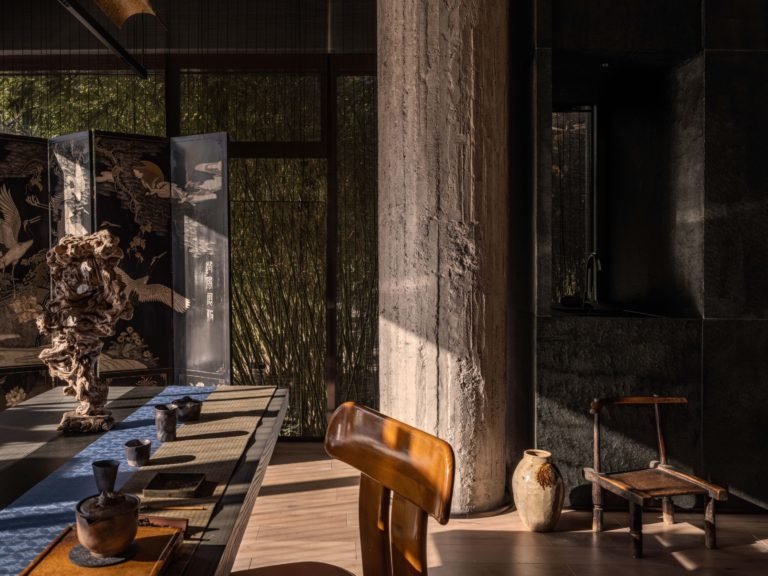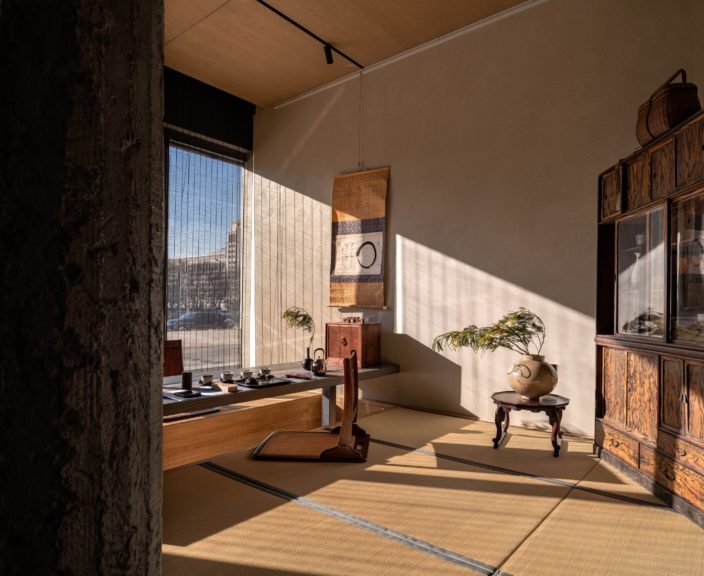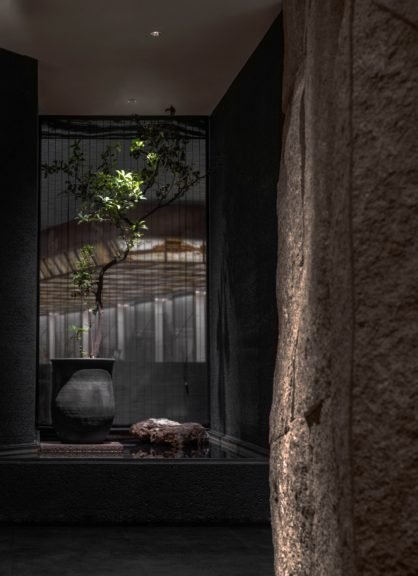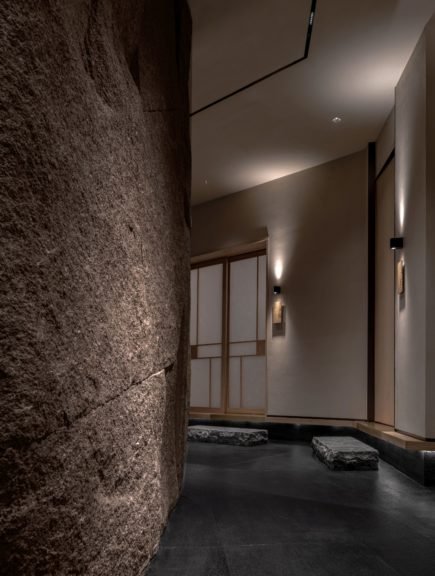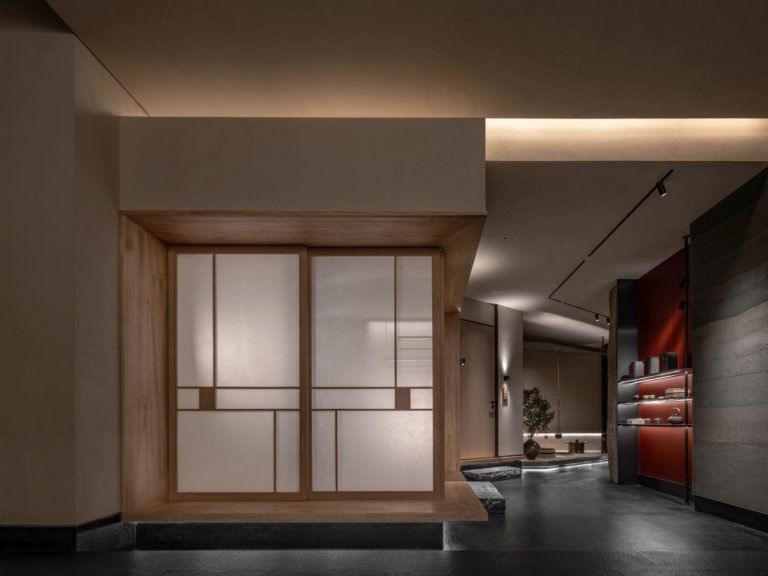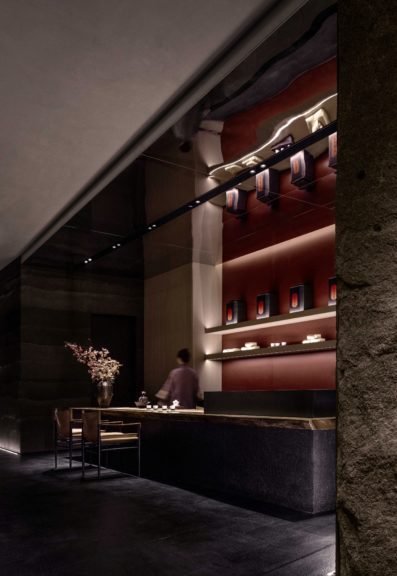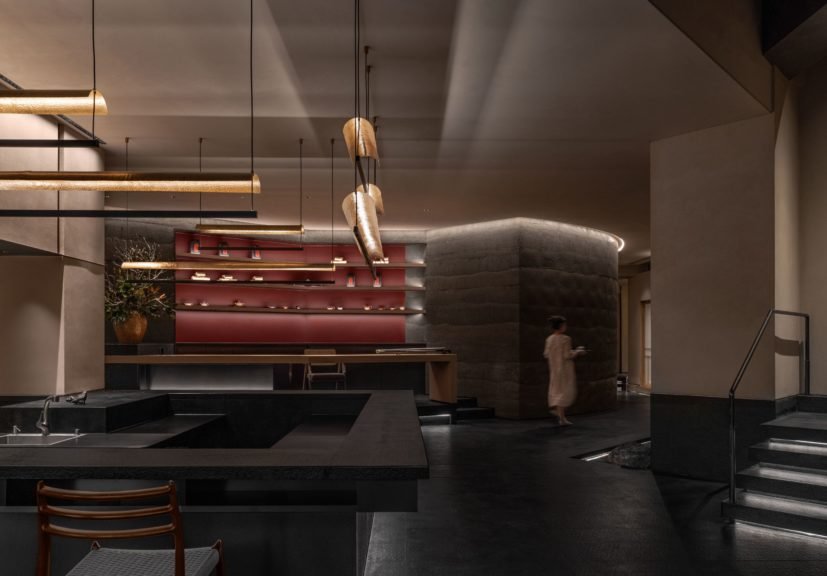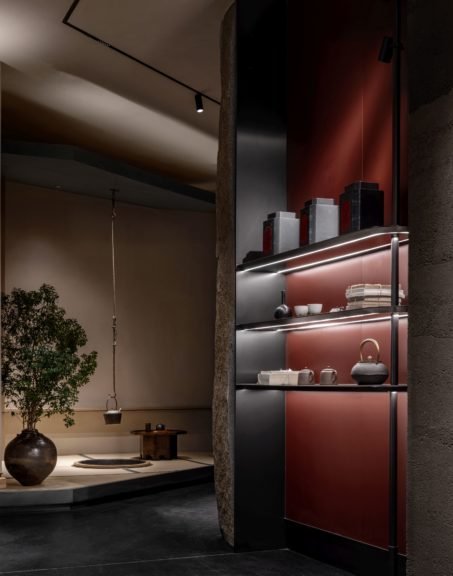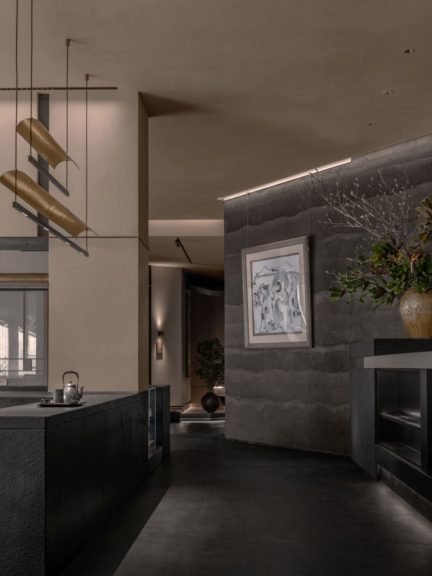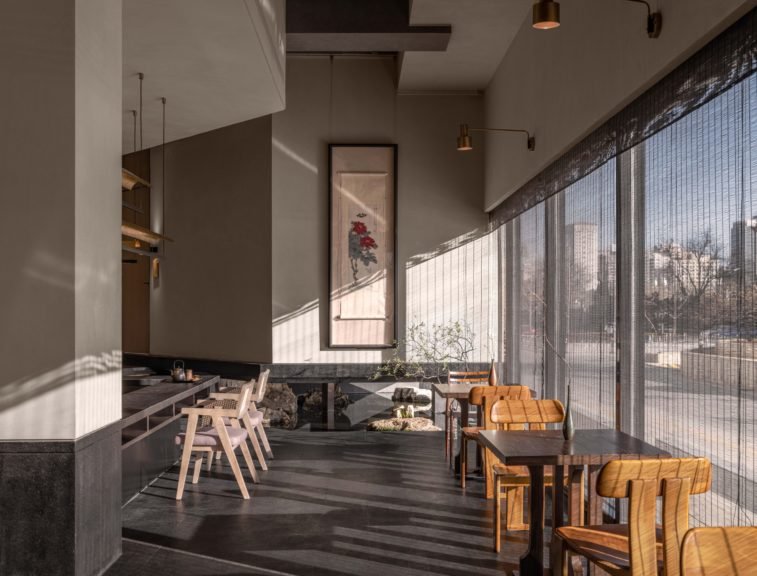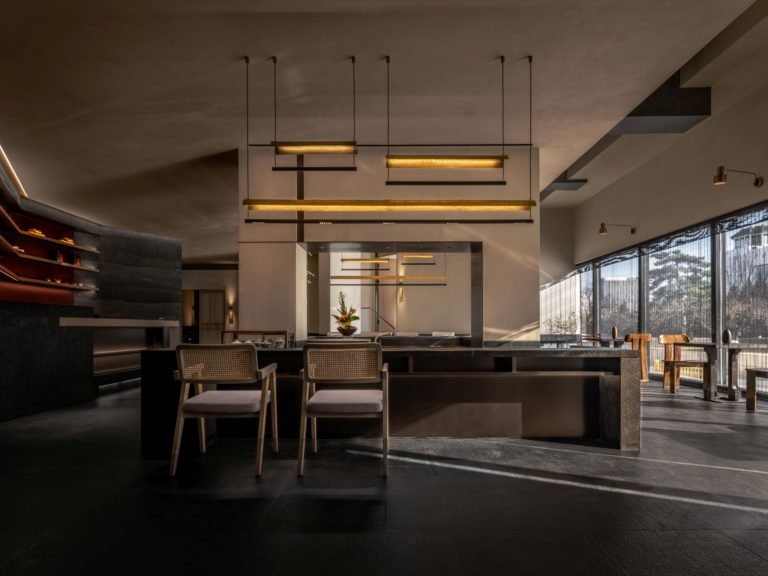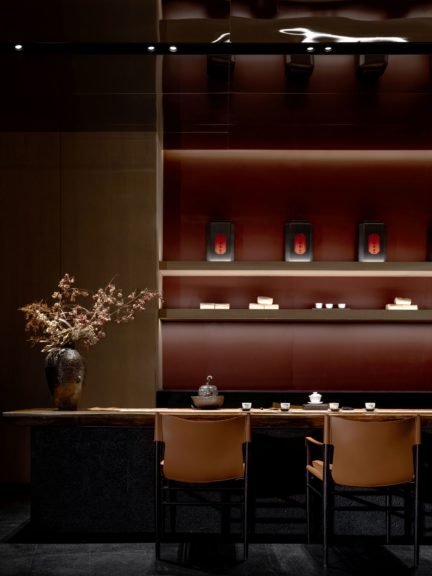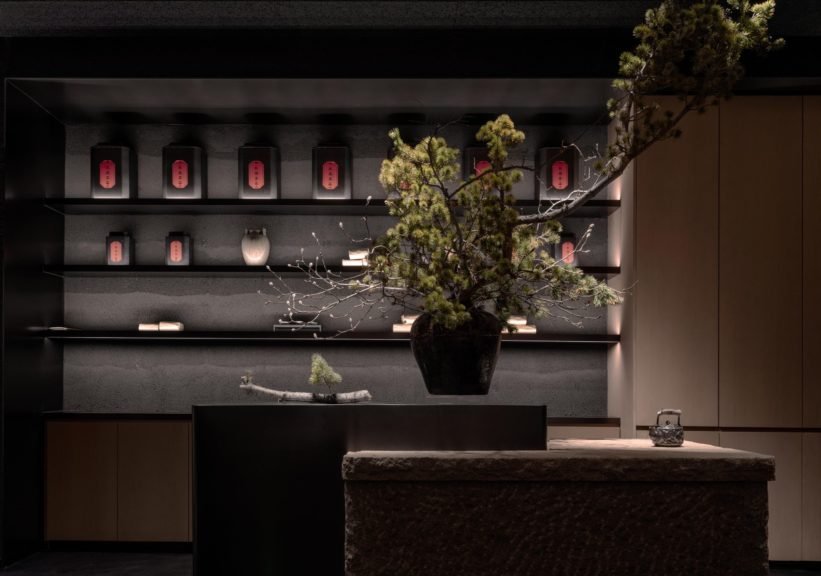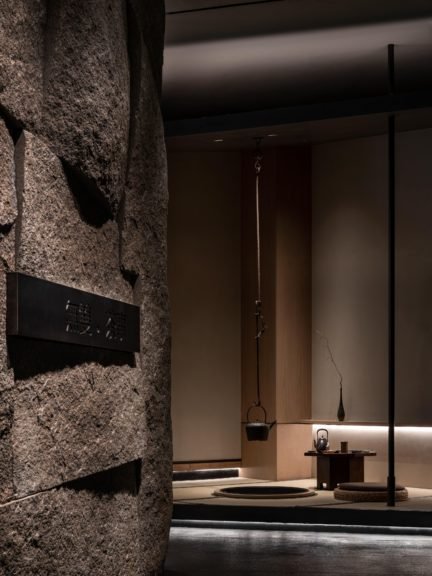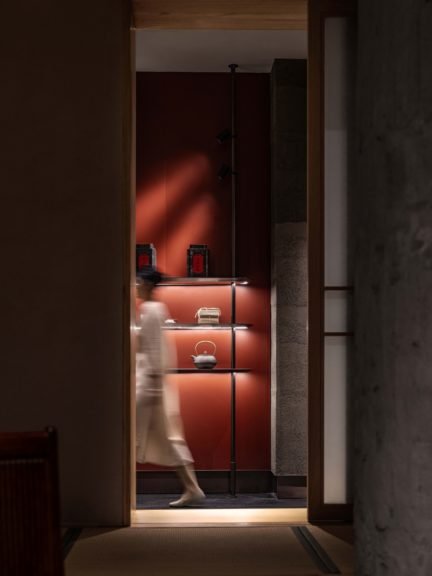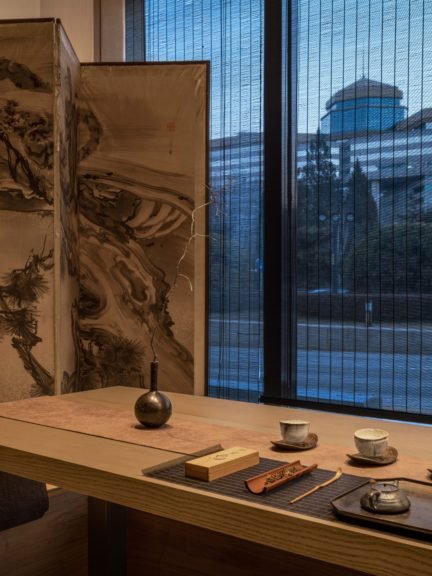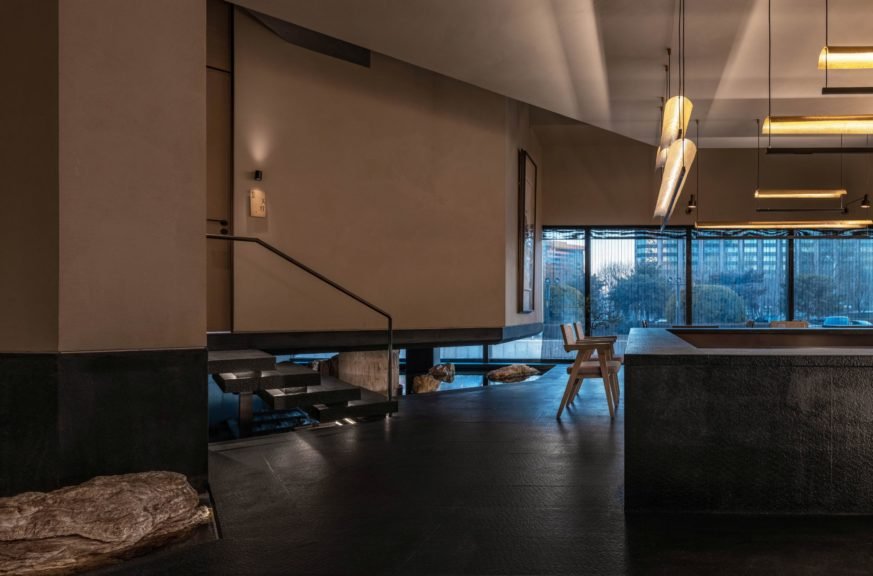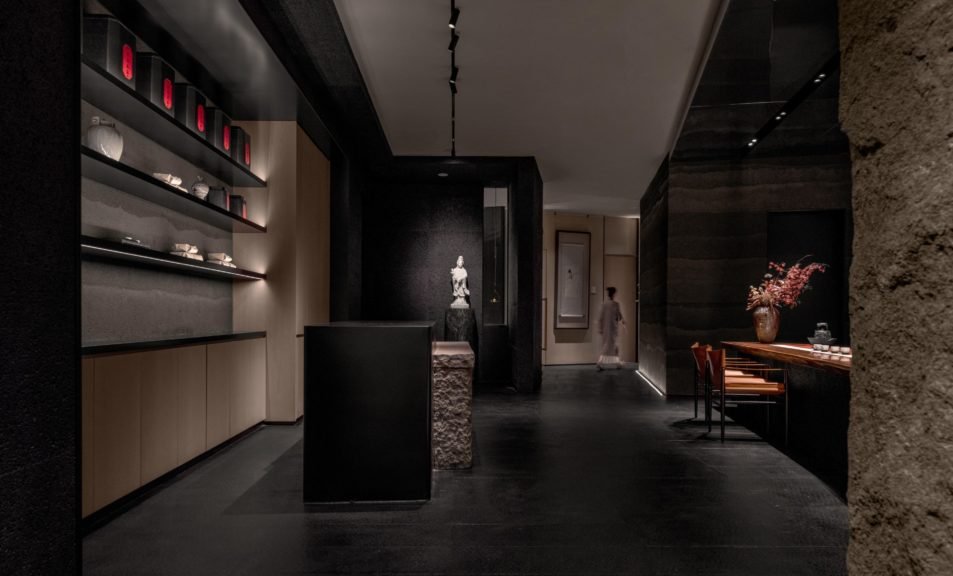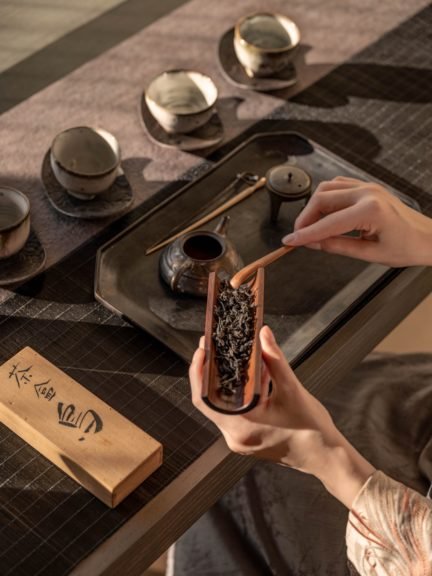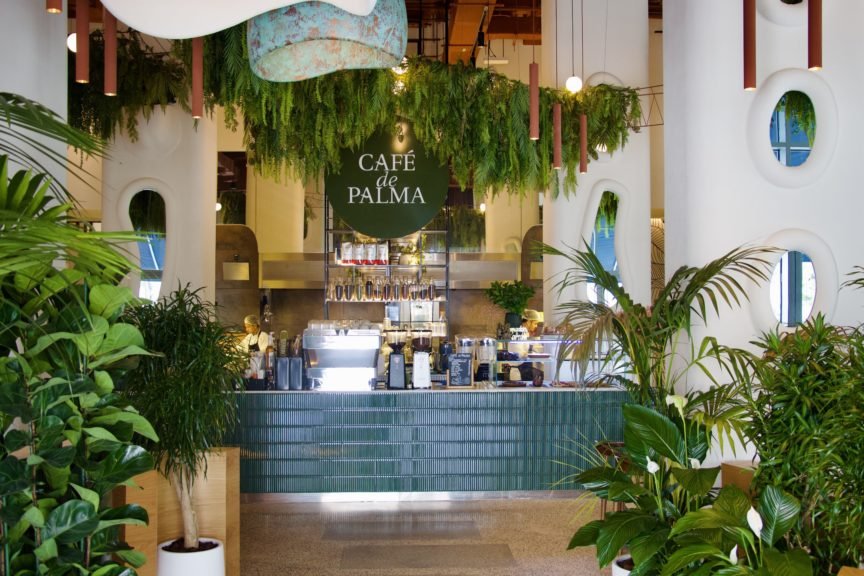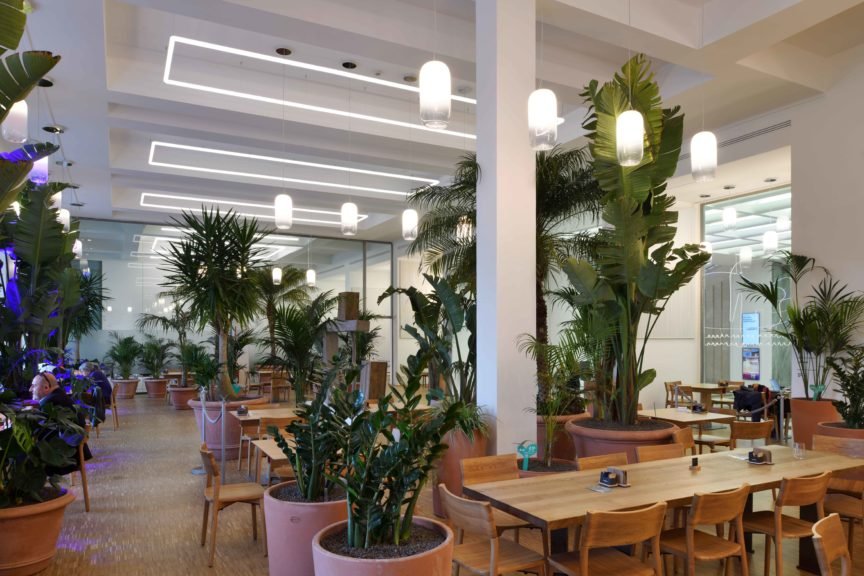About the project
Last September, Wushuang · Sip Tea officially opened to the public. Situated on the first floor of the Beijing International Hotel, the project is a result of the one-year hard work of Wu Wei and his team at IN-X Space Design.
The relationship between humankind and tea can be dated back to more than a thousand years ago. In terms of both time and location, diversity has been a prominent feature in the evolution history of Chinese tea, which makes its way of tasting more worthy of exploration. It is the tolerance and extensiveness of the tea culture that allows for the creation of Wushuang · Sip Tea as an icon of a hospitality space, representing both the elegant and artistic taste of the ancient times and the pioneering and lively lifestyle of the modern times.
From tea stalls with the practice of sipping tea while carrying teapots in the Jin Dynasty to the first teahouse in the Kaiyuan era of the Tang Dynasty, tea tasting has always been closely linked with the elegant taste, self-reflection and meditation of the men of letters. In the meantime, it is also considered the most accepted way of life among the ordinary people. According to the famous book Treatise on Tea in the Ming Dynasty by Xu Cishu, the most ideal scenarios for tea tasting include- “when the window is clear and the table clean, the guest is a young and fair lady, someone returns shortly from visiting friends, the breeze is gentle and the sun is radiant.”
Even today, a teahouse that wishes to pay tribute to nature, art and worldly life will also underscore the creation of vibes for leisure.
Ever since ancient times, tea tasting is believed to deliver the ultimate pallet experience in a simple and clean environment, and the pleasure of the practice is reliant on and enriched by indoor landscaping.
At the entrance, an entire mountain rock is chiseled and hung on the wall, unfolding a forest scene in front of the city dwellers. Starting from there, the rammed earth, wood veneer, and dark texture paint make the space deep and serene, and the tea counter and tea ceremony area around the corner emerge in a natural way. The corridor, paved with mountain rocks, extends all the way inward, and the tea rooms are designed to be slightly higher than the ground, looking as if they are floating in the wilderness. Then, pines, bamboo, screens, scrolls, vase, ancient Chinese music instrument, rocks, and tea wares are presented one by one, all being functional without seeming flamboyant.
With outdoor landscape and natural light, the space, featuring bamboo, rocks, and water landscapes, becomes more spatial after the central area. The conventional space layout is replaced by functional divisions including tea rooms, a loop tea counter, window seats, and tea ceremony exhibition area. Unlike the ancestors who were close to the nature, people in the modern era are confined to the city life and have to rely more on indoor landscaping for enjoyment and relaxation.
Looking back, Chinese tea culture, characterized by liberty and carefreeness, always has an inexhaustible history to explore. Its close association with nature, art, and the earthly life has made Wushuang with its modernity even more appropriate. As the end of the universe is renaissance, the long history of tea culture will enrich and enliven the modern space.
Photo Credits : Boris
Products Featured
Project info
Industry:
Size:
Address:
Country:
City:
Completed On:
Community
Design & Build Contractors:

